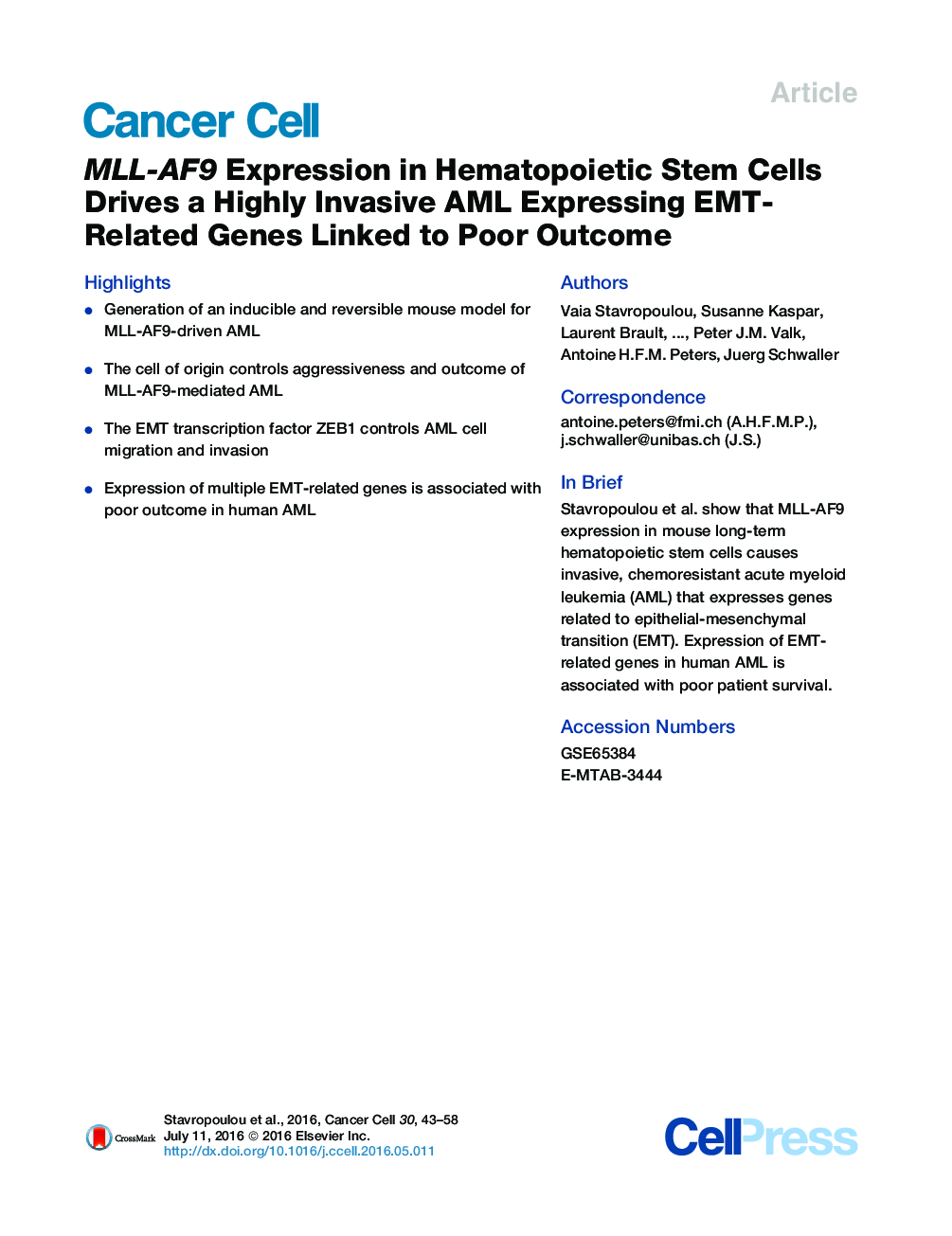| Article ID | Journal | Published Year | Pages | File Type |
|---|---|---|---|---|
| 2106704 | Cancer Cell | 2016 | 16 Pages |
•Generation of an inducible and reversible mouse model for MLL-AF9-driven AML•The cell of origin controls aggressiveness and outcome of MLL-AF9-mediated AML•The EMT transcription factor ZEB1 controls AML cell migration and invasion•Expression of multiple EMT-related genes is associated with poor outcome in human AML
SummaryTo address the impact of cellular origin on acute myeloid leukemia (AML), we generated an inducible transgenic mouse model for MLL-AF9-driven leukemia. MLL-AF9 expression in long-term hematopoietic stem cells (LT-HSC) in vitro resulted in dispersed clonogenic growth and expression of genes involved in migration and invasion. In vivo, 20% LT-HSC-derived AML were particularly aggressive with extensive tissue infiltration, chemoresistance, and expressed genes related to epithelial-mesenchymal transition (EMT) in solid cancers. Knockdown of the EMT regulator ZEB1 significantly reduced leukemic blast invasion. By classifying mouse and human leukemias according to Evi1/EVI1 and Erg/ERG expression, reflecting aggressiveness and cell of origin, and performing comparative transcriptomics, we identified several EMT-related genes that were significantly associated with poor overall survival of AML patients.
